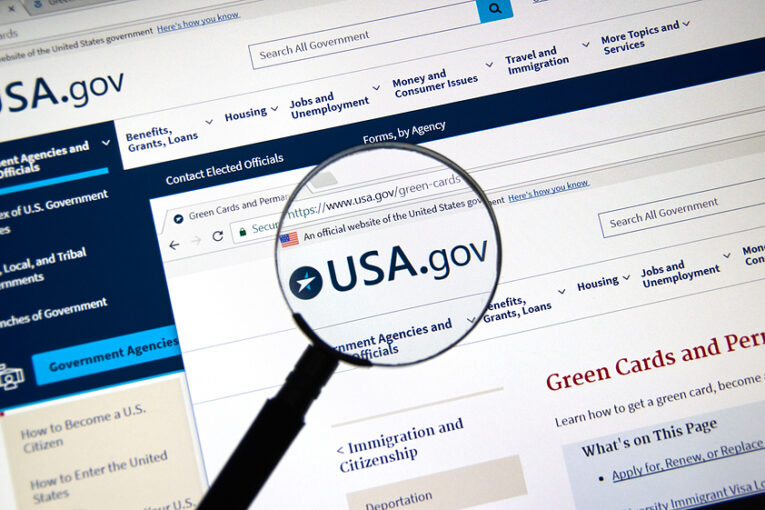Understanding Green Card Sponsorship
As immigration attorneys, we have witnessed countless stories of individuals from around the world seeking to build a life in the United States. The allure of the “American Dream” is undeniable, but the path to achieving it can be complex, especially when it comes to green card sponsorship.
That’s where I come in. My role is to demystify the intricate web of immigration laws and guide you through the process, ensuring you understand every step along the way. So, let’s dive in and explore the world of green card sponsorship—your ticket to the land of opportunity.
Understanding Green Card Eligibility
Before we delve into the nitty-gritty of sponsorship, let’s address the elephant in the room: eligibility. The U.S. Citizenship and Immigration Services (USCIS) has outlined several categories that determine your eligibility for a green card. These categories encompass a range of circumstances, including:
- Family relationships
- Employment opportunities
- Refugee or asylee status
- Special provisions
The USCIS website offers a treasure trove of resources detailing each eligibility category, which can serve as your starting point on this journey. However, navigating these complexities can be daunting, which is why seeking guidance from an experienced immigration attorney can be invaluable.
Employment-Based Sponsorship: A Common Path
One of the most prevalent routes to obtaining a green card is through employment-based sponsorship. This process involves a U.S. employer petitioning on your behalf, provided you possess a specific skill set, educational background, or work experience deemed valuable to the U.S. labor market.
The steps in this process are detailed and can vary depending on your job and qualifications. Here’s a quick overview:
- Labor Certification (PERM): Your employer must demonstrate that there are no qualified U.S. workers available for the position offered to you.
- Form I-140: After obtaining labor certification, your employer will file Form I-140 with USCIS, establishing your eligibility for a green card.
- Adjustment of Status or Consular Processing: Depending on your location, you’ll either adjust your status within the U.S. or undergo consular processing if you’re outside the country.
While this path may seem straightforward, trust me, it’s anything but. That’s why having an experienced immigration attorney by your side can be invaluable in navigating the complexities and ensuring your paperwork is in order.
Family-Based Sponsorship: Keeping Loved Ones Close
Family ties are a powerful force, and the U.S. immigration system recognizes this. Family-based sponsorship allows U.S. citizens and permanent residents to sponsor certain family members for a green card.
The process involves submitting petitions and providing supporting documentation to establish a qualifying relationship. Here’s a quick rundown:
- Form I-130: Your U.S. sponsor (citizen or permanent resident) files Form I-130 to establish the familial relationship.
- Priority Dates and Visa Availability: Once Form I-130 is approved, you’ll need to wait for a visa to become available based on your green card priority date.
- Adjustment of Status or Consular Processing: Similar to employment-based sponsorship, you’ll either adjust your status within the U.S. or undergo consular processing abroad.
While family-based sponsorship can be an emotional journey, it’s also a complex legal process. That’s why having an experienced immigration attorney in your corner can be invaluable, ensuring you navigate the intricacies smoothly and avoid any potential pitfalls.
The Perks of Green Card Status
Now that we’ve covered the primary pathways to obtaining a green card, let’s explore the benefits that come with this coveted status. Green card holders enjoy a wide array of advantages, including:
- Travel freedom: the convenience of traveling in and out of the U.S. without needing a new visa.
- Expanded employment opportunities: access to jobs requiring security clearance and federal employment.
- Federal benefits: eligibility for Social Security, Medicare, and other federal assistance programs.
- Educational advantages: options for federal student loans, grants, and in-state tuition rates.
- Family sponsorship: the ability to sponsor relatives for their own green cards, facilitating family reunification.
- Pathway to citizenship: After five years, green card holders can apply for U.S. citizenship, unlocking the right to vote in federal elections.
These advantages underscore the significance of green card sponsorship as more than just a legal status; it’s a gateway to a life full of opportunities in the United States.
Navigating the Green Card Categories and Preferences
The U.S. immigration system categorizes green card sponsorship based on employment, family ties, and the Diversity Visa Lottery. Understanding these categories and preferences is crucial for charting your course to lawful permanent residence.
Employment-Based Categories
The USCIS has defined five preference categories for employment-based green cards, each with its own criteria and annual visa limits:
| Category | Description |
| EB-1 | Outstanding professors, researchers, and individuals with extraordinary abilities |
| EB-2 | Professionals holding advanced degrees or exceptional abilities |
| EB-3 | Skilled workers, professionals, and other workers with training |
| EB-4 | Special immigrants, including religious workers and others |
| EB-5 | Immigrant investors |
Family Preference Categories
For those seeking family-based sponsorship, the preference categories are as follows:
- F1: Unmarried sons and daughters of U.S. citizens
- F2: Spouses, minor children, and unmarried sons or daughters of lawful permanent residents
- F3: Married sons and daughters of U.S. citizens
- F4: Brothers and sisters of U.S. citizens (age 21 and over)
The Diversity Visa Lottery
The Diversity Immigrant Visa Program, often referred to as the green card lottery, offers another path to U.S. residency. This program aims to diversify the immigrant population by providing visas to nationals of countries with historically low rates of immigration to the U.S.
To participate, applicants must:
- Be a native of an eligible “low-admittance” country.
- Meet U.S. admissibility standards under the Immigration and Nationality Act.
- Possess a high school education or its equivalent, or have two years of qualifying work experience within the past five years.
It’s important to note that the lottery does not favor applicants with existing family or employer sponsorship in the U.S. Instead, it randomly selects qualified entries to receive visas.
Filing Green Card Applications: Dotting the I’s and Crossing the T’s
Navigating the green card application process involves an intricate understanding of the required forms, documents, and procedures. As an immigration attorney, my role is to ensure you meticulously prepare your applications and adhere to the guidelines set by the USCIS.
Required forms and documents
To initiate the green card application, you’ll need to submit the following key forms and documents to the USCIS:
- Form I-140 for employment-based sponsorship
- Form I-130 for family-based sponsorship
- Supporting documents (proof of sponsor’s status, employment offer, birth certificates, etc.)
- Payment of the necessary USCIS filing fees
The Labor Certification Process
For employment-based sponsorship, obtaining labor certification is a key step. It requires your employer to prove to the Department of Labor that there are no qualified U.S. workers available for the position offered to you.
This process, known as PERM (Program Electronic Review Management), involves several stages, including:
- Conducting recruitment efforts to test the labor market
- Filing an ETA Form 9089 with the Department of Labor
Achieving labor certification is often seen as a demonstration of the necessity and uniqueness of your skills for the role in question.
Adjusting Status or Consular Processing
Once labor certification is approved (for employment-based cases) or the initial petition is accepted (for family-based cases), the next step is to choose between adjusting status for those within the United States or consular processing for applicants residing abroad.
- Adjusting Status: This option allows you to apply for a green card without leaving the U.S. You’ll submit Form I-485 and additional supporting documents to the USCIS.
- Consular Processing: This involves attending an interview at a U.S. embassy or consulate in your home country. Before the interview, you’ll need to submit the necessary forms, undergo a medical examination, and provide various documents.
Choosing between these two options depends largely on your current location and specific circumstances. As your immigration attorney, we will guide you through this decision and ensure you select the path that aligns with your situation.
Overcoming Green Card Backlogs: Patience and Strategy
Processing holdups and backlogs can make it more difficult for many would-be immigrants to obtain a green card and establish permanent residency in the USA. Understanding these hindrances and adopting strategic approaches can significantly enhance your chances of successfully navigating through them.
Understanding Priority Dates
A priority date is essentially your “place in line” in the green card queue and is a pivotal aspect of the immigration process. This date is established when an employer files Form I-140 on your behalf. The priority date determines when you can proceed with the final steps of obtaining a green card.
For candidates in oversubscribed categories, the priority date can be particularly crucial due to longer wait times. Understanding priority dates is key to managing expectations and planning accordingly.
Annual Numerical Limits
The U.S. immigration system imposes annual numerical limits on certain employment-based preference categories. These caps can create extensive backlogs for applicants from countries with high demand for green cards, such as India and China.
It’s imperative for both applicants and sponsors to be cognizant of these limits and incorporate them into their green card planning strategies.
Strategies to Navigate Delays
Facing green card backlogs can be daunting, but there are several strategies we can employ to navigate through these delays:
- Stay informed: Frequently check the U.S. Department of State’s Visa Bulletin for the most recent priority dates and visa availability.
- Maintain legal status: It’s vital for applicants to maintain their legal status in the U.S. while waiting for green card availability, which may involve renewing nonimmigrant visas as necessary.
- Consider alternative paths: In some cases, other avenues, such as the green card lottery, may provide additional opportunities for obtaining a green card.
- Be prepared: As the employer, ensure compliance with all requirements, such as offering the prevailing wage and demonstrating the financial ability to pay the offered wage. This preparation can prevent unnecessary delays in the process.
While overcoming green card backlogs requires patience and perseverance, understanding the system and taking proactive steps can help you and your sponsor navigate the process more effectively.
Maintaining Legal Status: A Crucial Step
Maintaining legal status is a critical aspect of the journey towards obtaining a green card in the United States. For many immigrants, navigating the complexities of immigration laws and regulations can be daunting, but it’s a necessary step to avoid complications.
The Role of Nonimmigrant Visas
Nonimmigrant visas serve as a temporary solution for individuals seeking to live and work in the U.S. while their green card sponsorship application is pending. The H-1B visa, for instance, is a popular option that allows individuals to work in specialized occupations while maintaining the intent to pursue a green card.
It is imperative for individuals on nonimmigrant visas to adhere to the terms of their visa to maintain legal status. Any breach can lead to complications with current and future immigration applications and can impact the ability to obtain permanent residence.
Transitioning from Nonimmigrant to Immigrant Status
For those seeking to transition from nonimmigrant to immigrant status, the process often involves employer sponsorship through employment. This typically requires a U.S. employer to file Form I-140 on your behalf with USCIS.
During this transition, it is crucial for the employee to maintain legal status. This may involve renewing or extending their nonimmigrant visa as needed.
By carefully following the procedures and maintaining legal status, nonimmigrant visa holders can successfully navigate the complex path towards becoming permanent residents of the United States.
Special Considerations and Tips
Navigating the green card sponsorship process involves careful attention to detail and adherence to regulations. Both employers and applicants have specific responsibilities they must fulfill to ensure a successful outcome.
Employer Responsibilities
Employers play a pivotal role in the green card sponsorship process, especially in employment-based categories. They must meet certain requirements, such as:
- Offering a prevailing wage that is in line with industry standards
- Demonstrating the financial ability to pay the offered wage
- Undergoing the labor certification process (PERM) to prove that there are no qualified U.S. workers available for the position
Employers are also tasked with ensuring that they and their employees comply with all legal requirements throughout the sponsorship process, including meticulous record-keeping and the timely filing of all necessary documentation.
Applicant’s Due Diligence
As an applicant, thorough preparation is key when undergoing the green card sponsorship process. This includes:
- Gathering all required documents
- Maintaining legal status in the U.S.
- Staying informed about your green card priority dates
For individuals applying under the EB-1 category, you may have priority status, allowing you to move directly to filing an I-140 petition without the PERM Labor Certification step.
It’s also crucial for applicants to understand their visa options, such as the H-1B visa, which permits them to work in the U.S. while their green card application is pending. Maintaining legal status is imperative to avoid complications.
Legal Assistance and Resources
Green card sponsorship is a complex process, and both employers and applicants may benefit from seeking legal assistance. Immigration attorneys like Anzen Legal Group can provide guidance, help navigate the bureaucracy, and ensure compliance with all federal regulations.
Additionally, resources such as our comprehensive guide on “How to Get a Green Card” can offer valuable information for those starting the process.
For those interested in alternative pathways to a green card, exploring options like the green card lottery may be beneficial. It is also important for green card holders to understand the process of green card renewal to maintain their status.
In summary, successful green card sponsorship is a collaborative effort requiring responsibility, diligence, and often professional legal counsel. By understanding their roles and staying informed, both employers and applicants can navigate the process more smoothly and increase their chances of success.
At Anzen Legal Group, we understand the complexities and nuances of the immigration system. Our team of experienced immigration attorneys is dedicated to guiding you through every step of the green card sponsorship process, ensuring you have the best chance of achieving your American dream.
So, whether you’re an employer seeking to sponsor a skilled worker or an individual looking to reunite with family, we’re here to help. Contact us today to schedule a consultation and take the first step towards a brighter future in the United States.





